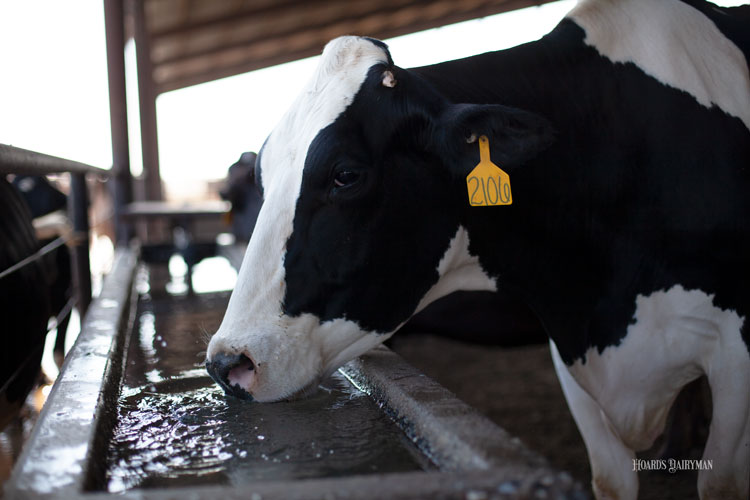
Conducting a heat-focused audit this summer could let your cows tell you when they are stressed, shared Cassandra Tucker at the recent TriState Dairy Nutrition Conference. The University of California, Davis researcher explained that cows have a “heat IQ” that helps them cope with warm temperatures and seek out relief.
As Tucker described it, “Cows have a certain kind of heat intelligence or heat IQ. They actually have a lot of information, and their bodies use that information to engage in a lot of actions that help them cope.”
A cow enacts several biological and behavioral actions to mitigate heat stress before it reaches more recognizable signs of stress such as panting, raised body temperature, and reduced dry matter intakes.
Even when cows’ body temperatures are normal, they will start to seek shade. They also begin to sweat, breathe faster, drool more, and drink more water. These behavioral changes are their way of acknowledging heat stress and trying to manage it before it gets too extreme, said Tucker.
Unfortunately, they’re also not the most easily recognizable or measurable metrics.
Tucker explained that a heat-focused audit on farm should include monitoring respiration rate, rectal temperature, and potentially drool. Respiration rate can be tracked by counting flank movements with one full breath equaling one inhale and one exhale. In a study conducted by her team using sprinklers to mitigate heat stress, cows began using the sprinklers around 60 breaths per minute.
Tracking rectal temperature is also a great but labor-intensive way to monitor heat stress. A cow’s average rectal temperature is 100.4° to 103°F, but Tucker said cows will start seeking heat abatement at 101°F.
Tucker’s team has recently been interested in tracking drool to identify cows under heat stress. Based on previous research studies done by the group, they believe length and type of drool might be a good and easily attained measure of cow heat load.








